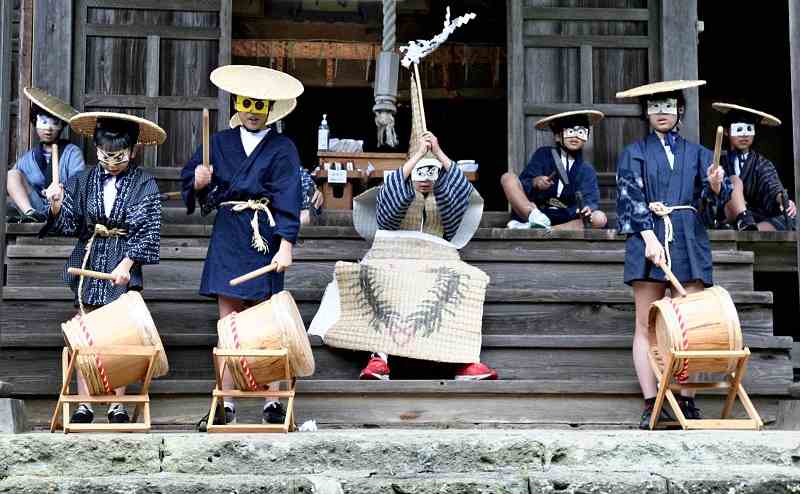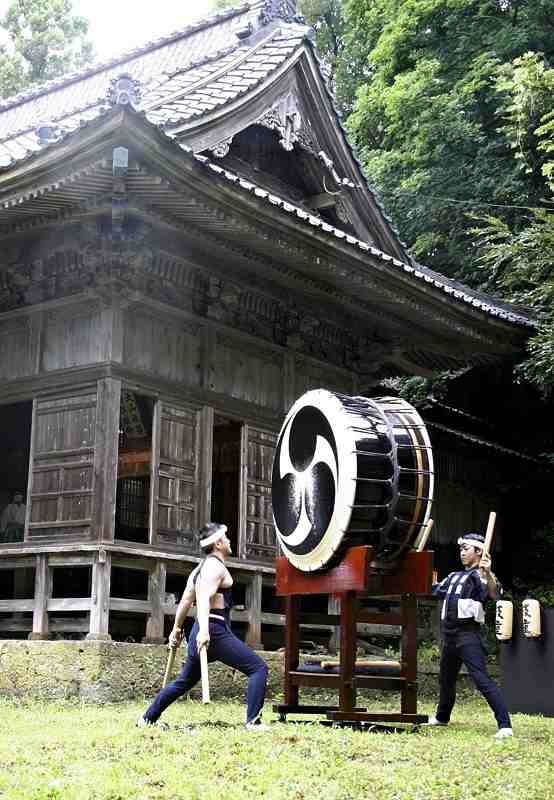Niigata : Children perform ritual at shrine on Sado Island

Students of Aikawa Elementary School perform the Yawaragi ritual at Oyamazumi Shrine in Sado, Niigata Prefecture, on July 23.
9:34 JST, September 11, 2022
SADO, Niigata — For the first time in 10 years, children performed a Shinto ritual to pray for the safety of miners on Sado Island, as residents are preserving traditional culture with the aim of registering its gold mine complex as a UNESCO World Heritage site.
Oyamazumi Shrine in Sado, Niigata Prefecture, is believed to have been built in 1605 by Okubo Choan. Okubo was the first Sado magistrate appointed by the newly created Tokugawa Shogunate and built the shrine as the chief spiritual guardian for the mines.
The ritual that was performed by the children at the shrine is called Yawaragi, which means to be soft in Japanese. In the ritual, performers sing a song to celebrate the discovery of gold ore vein. It is said the song contains the hope that the performance will soften the deity’s mind and soften the hard rock beds.
The Aikawa Elementary School has been working to pass on the old mining rituals in an effort to build support for the registration of Sado Island Gold Mines as a World Heritage site.
On July 23, eight students from the elementary school participated in the event. Following a member playing the role of supervisor, children in the roles of mine workers beat out a rhythm using barrels and gad and chanted for joy “Horaiya! Horaiya!”
Junya Kanai, 11, who played the role of supervisor, said, “Though I felt tense, I think I did well. I want the gold mines to be a world heritage site.”
At the shrine, the Sado-based taiko performance art ensemble Kodo made an inaugural dedication and put on a performance. Their energetic taiko drums and gongs rang throughout the precincts in the rain.

Members of the Kodo taiko ensemble dedicate a music performance in Oyamazumi Shrine in Sado, Niigata Prefecture, on July 23.



